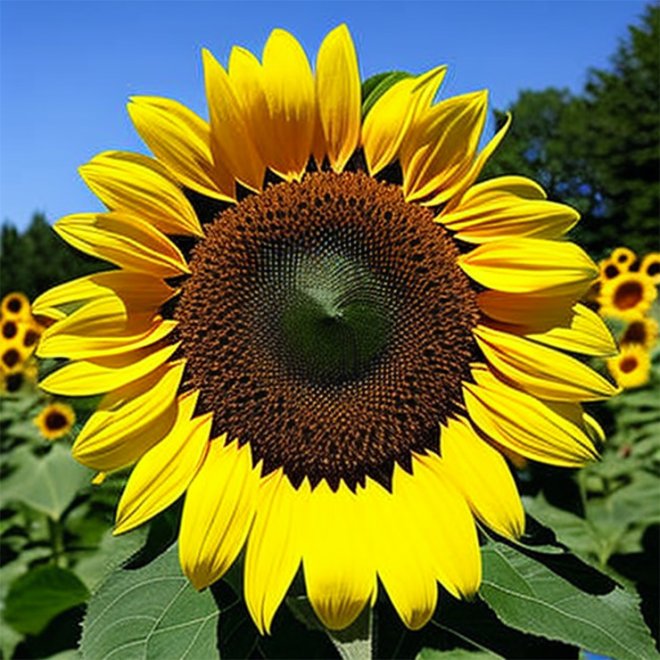
Plant Profile
Russian Mammoth Sunflowers (Helianthus annuus Russian Mammoth) are iconic giants of the sunflower world, known for their towering height and massive flower heads. These sunflowers can reach impressive heights of 8-12 feet or more, with flower heads that can measure up to a foot or more in diameter. The blooms feature bright yellow petals surrounding a dark central disk, attracting pollinators such as bees and birds. Russian Mammoth Sunflowers are not only visually stunning but also produce edible seeds, making them a favorite among gardeners and wildlife enthusiasts alike. They’re well worth the wait of 100 days until the plants reach maturity.
Soil pH
Russian Mammoth Sunflowers thrive in well-draining soil with a slightly acidic to neutral pH range between 6.0 to 7.5. However, they are adaptable to a wide range of soil types, including loamy and sandy soils, as long as they are fertile and rich in organic matter.
Sun Requirements
As sun-loving plants, Russian Mammoth Sunflowers require full sun to thrive. Plant them in an area that receives at least 6 to 8 hours of direct sunlight per day for optimal growth and flowering. Insufficient sunlight may result in reduced growth and smaller flower heads.
Watering Requirements
While Russian Mammoth Sunflowers are relatively drought-tolerant once established, consistent watering is essential, especially during the early stages of growth and during hot, dry periods. Water deeply and evenly, ensuring the soil is consistently moist but not waterlogged. Avoid overwatering, as it can lead to root rot and other issues. A layer of mulch around the base of the plants can help retain moisture and regulate soil temperature.
Best Plant Hardiness Zones
Russian Mammoth Sunflowers are well-suited for planting in USDA hardiness zones 3-9. These zones offer the ideal climate conditions for sunflowers, with warm Summers and sufficient growing seasons. In these zones, Russian Mammoth Sunflowers can reach their maximum height and produce abundant blooms throughout the Summer months.
Additional Tips
Provide support: Due to their towering height, Russian Mammoth Sunflowers may require staking or support to prevent them from toppling over, especially in windy conditions. Install sturdy stakes or use trellises to support the plants as they grow.
Space properly: Plant Russian Mammoth Sunflowers with adequate spacing between plants to allow for proper air circulation and to prevent overcrowding. Unlike most other sunflower varieties, you can plant these sunflowers closer together (18-24 inches) to create a living screen.
Harvest seeds: Allow the flower heads to fully mature and dry on the plant, then harvest the seeds for roasting or feeding wildlife. If you aren’t interested in growing your sunflowers to harvest, you can deadhead them when the petals begin to wilt. If your growing season is long enough, the plant may produce another bloom.
With their impressive height and massive flower heads, Russian Mammoth Sunflowers make a bold statement in the garden. With proper care and attention to their soil, sun, and watering requirements, these sunflowers can thrive and become a focal point of any landscape.


 Previous
Previous

